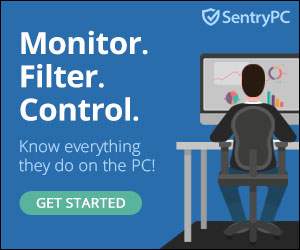Disclosure: We’re reader-supported. When you buy through links on our site, we may earn an affiliate commission at no extra cost to you. For more information, see our Disclosure page. Thanks.
Contents
- 1 Track SEO Performance With Top Tools & Metrics
Track SEO Performance With Top Tools & Metrics
Slug: track-seo-performance-tools-metrics
Meta Description: Learn how to track SEO performance using the best tools and metrics. Discover how to monitor rankings, traffic, backlinks, and more for sustained SEO success.
Introduction
SEO is a continuous process. You can’t optimize your website, publish content, and forget about it. To achieve long-term success, you need to track your SEO performance regularly, analyze metrics, and adjust your strategy based on what the data shows.
In 2025, using the right SEO tools and metrics is more crucial than ever. Without a clear understanding of how your SEO efforts are performing, you risk wasting resources and missing valuable opportunities to grow your organic traffic.
This guide walks you through the most effective tools and metrics for tracking SEO performance, ensuring you stay on top of your rankings and optimization efforts.
🔗 Want to fix technical issues before tracking? Read: [Fix These 10 Technical SEO Issues for More Traffic]
1. Key SEO Metrics to Track
Before diving into the tools, it’s important to understand the key metrics that indicate SEO success. These metrics help you measure the impact of your strategies and fine-tune your approach.
Organic Traffic
Organic traffic is the number of visitors who come to your website from search engines. This is one of the most direct indicators of your SEO efforts. Track your organic traffic growth over time to see how well your content and site optimizations are performing.
Tools for Tracking:
- Google Analytics (Primary tool for traffic tracking)
- Google Search Console (Provides search performance insights)
Keyword Rankings
Keyword rankings show how well your content ranks for specific search queries. It’s important to track both short-tail and long-tail keywords to get a complete view of your SEO progress.
Tools for Tracking:
- SEMrush
- Ahrefs
- Rank Math (with WordPress integration)
- Moz
Click-Through Rate (CTR)
CTR measures the percentage of people who click on your listing in search results. A high CTR indicates that your title tags and meta descriptions are compelling and relevant to search queries.
Tools for Tracking:
- Google Search Console
- Google Analytics
- Ahrefs
🔗 Want to optimize titles and meta descriptions? Read: [15 On-Page SEO Tips to Boost Rankings in 2025]
2. Top SEO Tools for Performance Tracking
There are numerous SEO tools available, but some stand out due to their features, accuracy, and ease of use.
Google Analytics
Google Analytics is the gold standard for tracking website performance. You can track:
- Organic traffic
- Bounce rate
- Conversion rate
- Engagement metrics (time on site, pages per session)
Google Analytics allows you to segment data by source/medium, letting you pinpoint SEO traffic and understand your audience better.
Google Search Console
Google Search Console provides crucial insights into your website’s performance in Google Search. You can monitor:
- Impressions: How often your site shows up in search results.
- Clicks: How often people click on your website in search results.
- Average Position: Your site’s average position in search results for keywords.
- Core Web Vitals: Insights on page experience and loading speed.
Google Search Console is essential for understanding your search presence and identifying issues that could be affecting performance.
🔗 Also helpful: [Track SEO Performance With Google Search Console]
Ahrefs
Ahrefs is a powerful tool for tracking backlinks, keyword rankings, and competitor analysis. It’s especially useful for monitoring the following:
- Keyword Rankings: Check where your pages rank for your target keywords.
- Backlink Profile: See how your backlinks are growing and identify toxic links that may hurt rankings.
- Site Audit: Get a comprehensive SEO audit to identify on-page and technical SEO issues.
SEMrush
SEMrush is a versatile SEO tool that allows you to track rankings, analyze competitors, and find keyword opportunities. It also provides:
- Position Tracking: Monitor rankings over time for specific keywords.
- Backlink Audit: Check for quality backlinks and identify any toxic links.
- Traffic Analytics: Assess your website’s traffic and engagement trends.
🔗 For backlink-related tips: [12 Link Building Tactics That Google Approves]
3. Track Backlinks and Domain Authority
Backlinks remain one of the most significant ranking factors in SEO. Tracking your backlinks is vital to ensure you’re building a strong link profile and not accumulating harmful links.
Backlink Tools:
- Ahrefs: Provides comprehensive backlink analysis, including broken links and anchor text distribution.
- Majestic: Offers insights into your link profile’s strength and quality.
- Moz: Helps track your Domain Authority (DA), which can provide a good sense of how well your website is likely to perform in search rankings.
By tracking backlinks regularly, you can:
- Remove or disavow toxic links
- Identify high-quality linking opportunities
- Monitor the growth of your domain authority
4. Core Web Vitals and Page Experience Metrics
In 2025, page experience is more important than ever for SEO. Google uses Core Web Vitals to measure page loading performance, interactivity, and visual stability.
Core Web Vitals to Track:
- Largest Contentful Paint (LCP): Measures how long it takes for the largest element (usually an image or text block) to appear on the screen.
- First Input Delay (FID): Measures how quickly the page responds to user input (e.g., clicking a button).
- Cumulative Layout Shift (CLS): Measures how much the page layout shifts during load, impacting the user experience.
Tools for monitoring Core Web Vitals:
- Google Search Console (Core Web Vitals Report)
- PageSpeed Insights
- Lighthouse
- GTmetrix
5. User Behavior Metrics
In addition to traditional SEO metrics, tracking user behavior gives you insights into how people interact with your site. This is vital for understanding how well your content resonates with visitors.
Key metrics to monitor:
- Bounce Rate: The percentage of visitors who leave your site after viewing just one page. A high bounce rate could signal poor user experience or irrelevant content.
- Time on Page: Indicates how long visitors stay on a page. Longer engagement often correlates with higher-quality content.
- Pages per Session: A higher number of pages per session indicates deeper engagement and better content navigation.
Use tools like Google Analytics to track these metrics.
6. Tracking SEO Success Over Time
SEO is not an overnight process. It’s important to measure long-term trends and track progress over months or even years.
Key to tracking long-term SEO success:
- Set Up Goals: Define measurable goals such as ranking improvements, traffic increases, or conversion rate boosts.
- Monitor SEO Changes: Regularly check how changes in your strategy impact metrics, especially after significant updates (Google algorithm updates, content refreshes, etc.).
- Adjust Strategy: Based on your data, refine your content and technical strategy to continue improving.
Conclusion
To succeed with SEO in 2025 and beyond, you need to track performance rigorously. By using the right tools and metrics, you can identify areas for improvement, celebrate successes, and stay on top of ever-changing search algorithms.
Top Tools Recap:
- Google Analytics for traffic and engagement
- Google Search Console for search performance and core web vitals
- Ahrefs and SEMrush for keyword rankings, backlinks, and site audits
Regular tracking will help ensure that your SEO efforts lead to sustained growth and visibility.
🔗 Next: [Top 10 SEO Mistakes to Avoid in 2025] — learn the common pitfalls that could harm your SEO performance.
Primary Keyword in Closing Paragraph:
By consistently tracking your SEO performance with these powerful tools and metrics, you can refine your strategy and achieve long-term success in search rankings.



